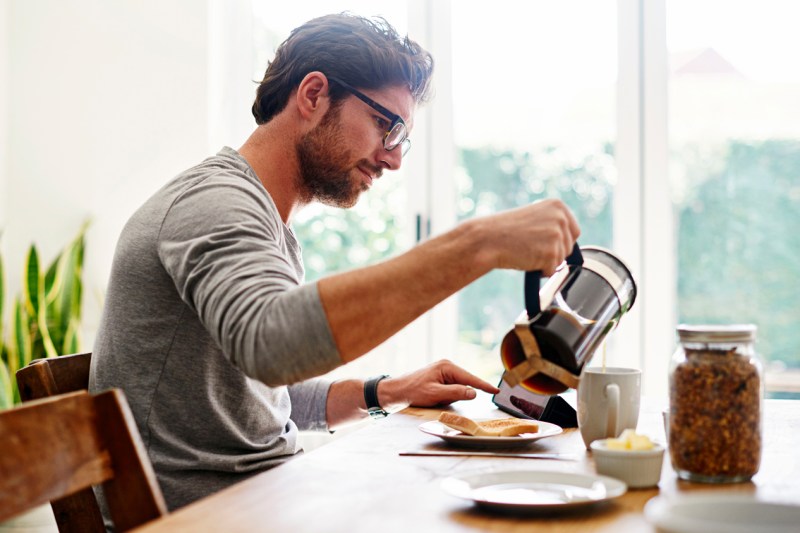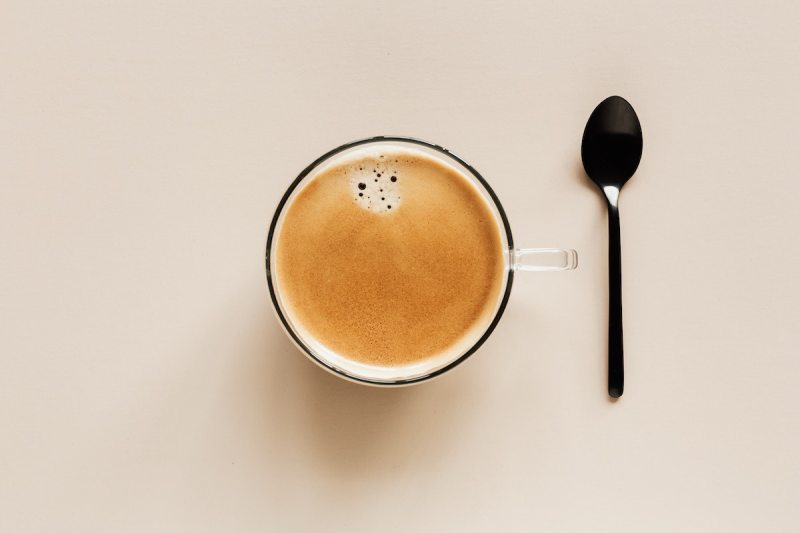
If you find yourself bored with coffee pods or sick of that old and stale coffee pot, it may be time to revisit a classic — the French press. While other methods may tempt us with their convenience, there’s truly no better coffee flavor than that which comes from this beautifully old-fashioned method.
When used properly, a French press coffee maker yields the perfect cup of joe — unless you’re using crappy coffee beans, then nothing can save you. When used poorly, though, it can easily ruin the brew, sending coffee grounds swirling into the liquid and destroying your beverage, your mood, and your morning. Many a coffee enthusiast out there has never even tried a hand at the French press given the device’s perilous reputation. (If you need more proof, just search “French press fails” on YouTube — there are way more than you might think.)

How to use a French press
First, you need to make sure you have the right ratio of water to coffee (we’ll talk about the best coffee for French press brewing soon). We recommend 1 ounce of ground coffee to 16 fluid ounces of water (that’s about two generous tablespoons of coffee). Make sure the water is heated to around 200 degrees Fahrenheit. If you don’t have a good food thermometer (meat thermometers work great for this), bring water to a simmer, then let it rest for two or three minutes. But really, we recommend picking up a thermometer.
Scoop the coffee into the bottom of the press, then slowly pour in that 200-degree water and place the top of the device on, with the plunger raised all the way up. Now for some waiting.

In my opinion, 4 minutes is the ideal brew time for good French press coffee, but you can pour a cup out after only two minutes and still enjoy decent extraction, especially if you went heavier on the java in the coffee-to-water ratio. Don’t try to make an extra-strong cup by steeping the grounds longer, since after more than a dozen minutes, give or take, your brew will start to turn bitter and astringent. If you want stronger coffee, add more grounds (or make espresso with these excellent espresso makers).
Finally, after those four minutes, slowly and with control, press the plunger down. Make sure to leave the plunger down as you pour out your beverage, and don’t jostle the plunger’s handle since that may send grounds past the screen and into your coffee — it would be a shame to ruin the brew mere seconds before you enjoy it!

How to make French press coffee: Step-by-step instructions
So you’re in a rush, huh? Then you probably should have read this part first. Here’s the quick and dirty to using a Bodum French press:
- Place 2 tablespoons of coarse-ground coffee at the bottom of the French press.
- Slowly pour 16 ounces of hot (200 degrees Fahrenheit) water into the press and place the top on the unit.
- Let the mixture brew for 4 minutes.
- Slowly and steadily press the plunger down, making sure to lower it straight down.
- Pour out your 2 cups of coffee and enjoy.

The best coffee to use in a French press
The best French press coffee is really whatever type of coffee you love in your mug, be it Colombia, Egyptian, or what have you. You could even decide to use the world’s strongest coffee if that’s your thing, or indulge in one of the world’s five most expensive coffees.
What matters more than variety is the coffee grind type. French press coffee makers work best with coarse grinds for two reasons. The first is pretty obvious: finely ground coffee is more likely to slip past the press’s filter and get into your drink. And who wants that?
The other reason coarse grinds are the best for French press brewing is due to the way the hot water permeates these larger bits of the bean during the extended time the grounds and water spend together, which is different from regular drip coffee. Large grounds absorb more water than finer bits and subsequently release more flavor, yet they do not lead to the over-extraction common with finer grinds, thus the resulting brew is full-flavored without being acidic or astringent in taste. (On the other hand, a quick-brewing espresso requires an extra-fine grind, and some bitterness is expected and desired.)
As for taste; I recommend a medium roast coffee. Darker roasts often have a more acidic profile, so lighter roasts are better for the long extraction period. Also, medium and lighter roasts usually have more caffeine, which is another bonus.

Other creative uses for your French press
Your trusty French press can be much more than just a coffee brewer. If you enjoy using it, then here are some unexpected and useful ways to put it to work for beverages beyond hot coffee.
- Tea: Steep loose-leaf tea for a flavorful and full-bodied brew. Just like with coffee, use hot water appropriate for the type of tea and let it steep for the recommended time before plunging.
- Cold brew coffee: Make concentrated coffee for iced lattes or cold brew by using cold water and steeping for 12 to 24 hours.
- Herbal infusions: Get creative with fruits, herbs, and spices. Muddle some berries or cucumber, add mint or ginger, or experiment with citrus peels for refreshing homemade drinks.
- Broth: Steep aromatics like garlic, ginger, herbs, or chilies in hot water for a flavorful base for soups, stews, or risotto.
And with that, you now have all the information you need to brew the best damn cup of French press that’s ever been pressed (and some other drinks). It’s now time to get your caffeine on! Though, you may want to grab a carafe to put your coffee in.
Editors' Recommendations
- Your guide to the pescatarian diet for healthier living
- Get creative: How to use hibiscus in your cocktails this spring
- How to make the perfect carnitas, according to a chef
- The Native American cuisine movement is on the rise
- What is a barrique? Exploring wine’s most popular barrel size




